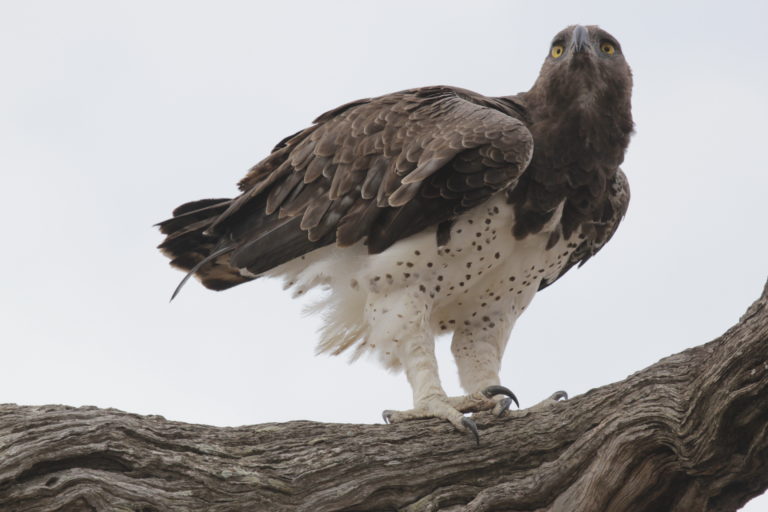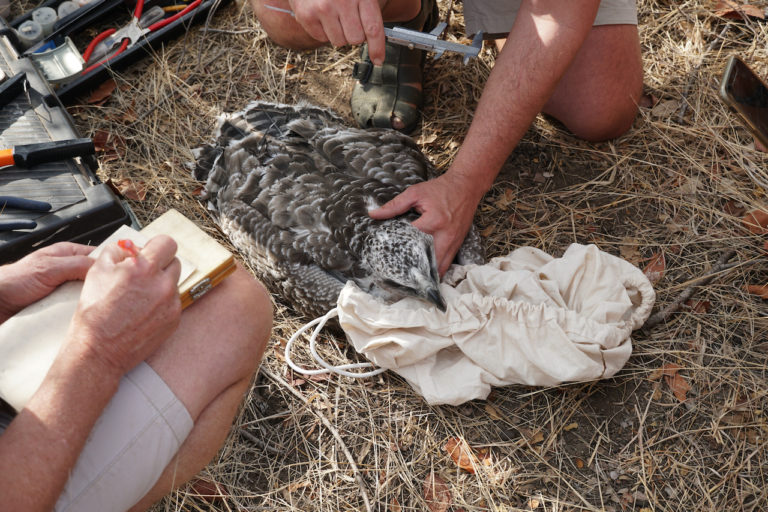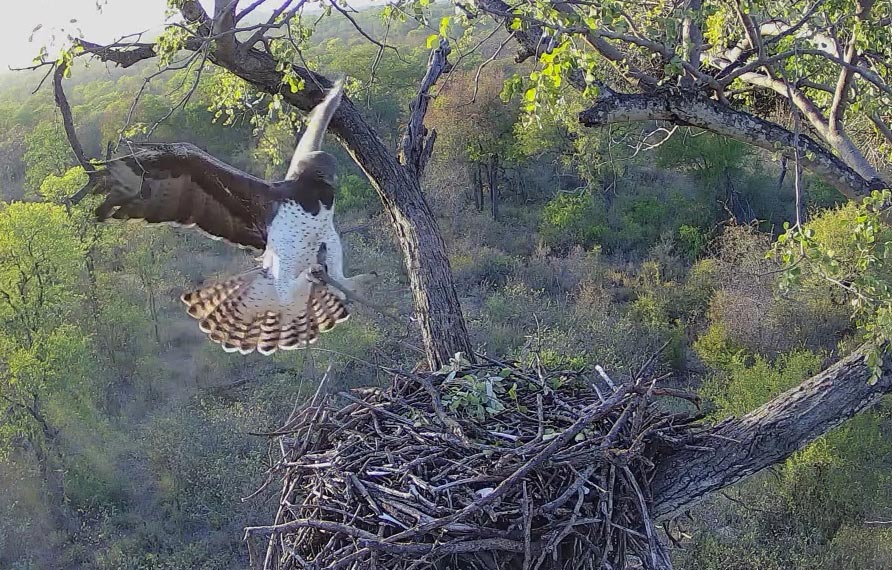Standing as the largest eagle in Africa, the Martial Eagle (Polemaetus bellicosus) is an impressive raptor. With a stature measuring 78 – 83 cm and a weight between 3.3 to 4.7 kg, these formidable birds, especially the females, outsize their male counterparts significantly. Notable for their striking contrast of dark head, neck, throat, and back against a spot-adorned white underbelly, they present an awe-inspiring sight. Found predominantly across sub-Saharan Africa, these eagles prefer areas outside the lowland forests of West Africa. Their presence is particularly noticeable in the protected reserves of South Africa, where they find a safe haven.
Their declining population has been a subject of various scientific studies, including a 2017 study published in the Cambridge University Press that highlighted a 60% decline over a 20-year period. Consequently, Martial Eagles are now classified as “endangered” in South Africa.



A pair of Martial Eagles have successfully bred on Selati for several years. In 2020, with the assistance of John Davies from the Endangered Wildlife Trust (EWT) Birds of Prey Programme, we managed to ring and measure a fledgling. Subsequently, a camera trap was installed at the nest, providing us with vital data about nest activity and prey species.
This success motivated us to upgrade the system in August 2021 to a solar-powered, real-time imaging system capable of capturing motion-activated still images and streaming continuous live video footage. With this upgrade we were looking forward to being able to closely monitor the eagles’ breeding biology, including behaviour, incubation, chick development, prey selection, and post-fledging dependence on the nest.
The use of this technology would also ensure minimal disturbance at the nest during the breeding/fledging period. Through our partnership with BirdLife South Africa, we were gearing up to reach a wide audience of birding enthusiasts and raise funds for conservation via a subscription-based membership.
We were poised for the 2022 breeding cycle with this system in place. Despite early signs of eagles visiting the nest in February 2022, the original pair did not return as anticipated. However, a new pair appeared in June 2022, indicating that the male from 2020 may have died, and the female had found a new, younger mate. We anticipate that this new pair will return to breed within the next few years, and we eagerly await the opportunity to capture and share this unique wildlife saga.
Researchers will be provided free access to the information generated by this initiative, reaffirming our commitment to the conservation of Martial Eagles.
In the interim we are testing this technology further by adding another live camera on a Verreaux’s Eagle (Aquila verreauxii) nest on the reserve. We are excited to share that the breeding pair has successfully started breeding and have laid 2 eggs. One of the eggs has hatched. To get access to our live stream, visit our Verreaux’s Eagle project page.